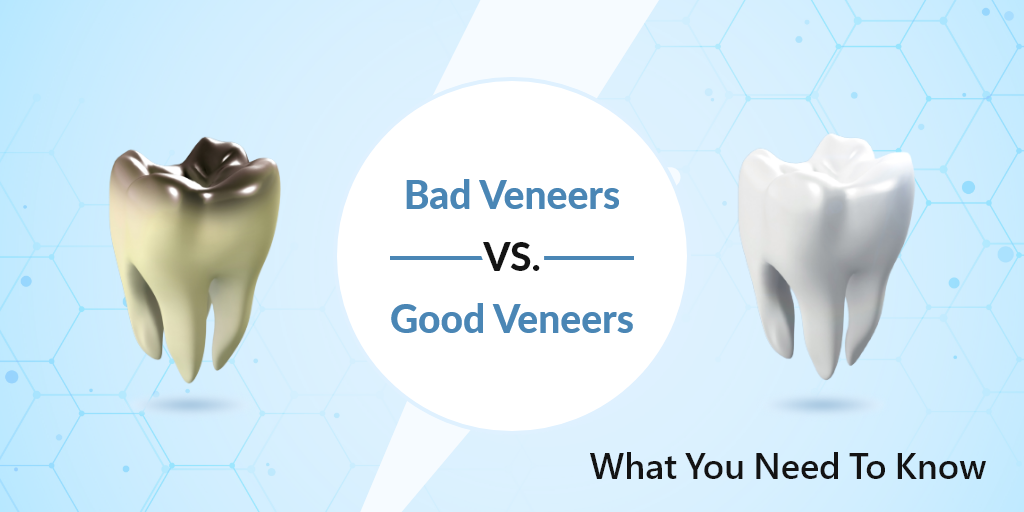When considering dental veneers, understanding the distinction between bad veneers vs. good veneers is crucial for optimal results. Whether it’s due to a lack of knowledge, rushed decisions, or budget constraints, some patients end up with veneers that don’t meet their expectations. So, what differentiates good veneers from bad ones? Let’s delve deeper.
Signs of Bad Veneers
- Poor Fit and Alignment: One of the most evident signs of substandard veneers is an improper fit. This might manifest as gaps between the veneer and the gum line or overlapping veneers. Not only can this be aesthetically displeasing, but it can also lead to oral health issues down the line.
- Unnatural Appearance: Veneers that don’t mimic the translucency, color, and shape of natural teeth can look fake and overly bright, especially under certain lighting.
- Reduced Durability: Bad veneers tend to chip, crack, or stain more easily, leading to frequent trips to the dental professional for repairs or replacements.
Characteristics of Good Veneers
- Custom Craftsmanship: Quality veneers are tailor-made to fit the patient’s teeth perfectly. They’re meticulously designed to align with the gum line and adjacent teeth, ensuring a natural appearance.
- Aesthetic Brilliance: “Good vs bad veneers” can often be discerned by their appearance. Good veneers seamlessly replicate the color and translucency of natural teeth. They’re crafted to suit the patient’s face, ensuring they enhance the smile rather than detract from it.
- Long-lasting Durability: Premium veneers are made from high-quality materials, ensuring they remain resilient against daily wear and tear. With proper care, they can last over a decade.
Making an Informed Choice
It’s essential to keep in mind that the success of veneers doesn’t solely rely on the veneers themselves. The expertise of the dentist plays a pivotal role. When researching, don’t merely look for the cheapest option. Instead, prioritize:
- Experience and Expertise: Opt for a dentist with a proven track record in cosmetic dentistry and veneer placement.
- Before-and-After Photos: These can provide a realistic insight into the dentist’s capabilities. Look for consistency in their results.
- Patient Reviews: “Good veneers vs bad veneers” often becomes apparent in patient testimonials. Look for feedback that speaks about the process, the aesthetics, and the longevity of the veneers.
Maintaining Your Veneers: Tips for Longevity
While the quality of your veneers plays a significant role in their longevity, how you care for them can make a substantial difference too. To ensure your veneers last and remain in pristine condition:
- Practice Good Oral Hygiene: Regular brushing and flossing are paramount. While veneers themselves can’t decay, the underlying tooth can. Ensure you’re using a non-abrasive toothpaste to avoid scratching the veneers.
- Avoid Staining Foods and Drinks: While high-quality veneers are resistant to staining, it’s still a good idea to minimize exposure to culprits like coffee, red wine, and berries.
- Use a Protective Mouthguard: If you play contact sports or grind your teeth at night, wearing a mouthguard can prevent potential damage to your veneers.
- Regular Dental Check-ups: Maintain regular visits to your dentist to monitor the health of your veneers and receive professional cleanings.
Understanding the World of Veneers
The world of veneer treatment offers a transformative solution for those seeking a smile makeover. By understanding the nuances between bad and good veneers and making informed choices, patients can ensure a result that’s not only beautiful but also lasting.
